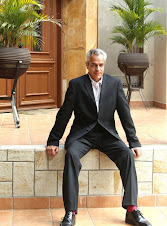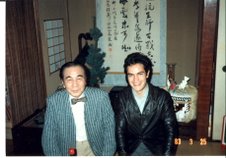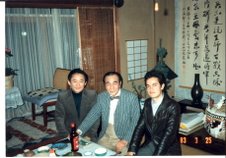A Northumbrian Anthem, an update
That contemporary music has distanced itself from society is a frequent contention. That society has given up on new music is the obverse claim.
A simplistic view would be that educated composers have secluded themselves in ivory towers where rarified music is heard by a few connoisseurs, mostly other composers. They compose for themselves and for each other, and they regard any concession to the public taste as a betrayal of high art’s precepts. This, of course, is an unhealthy state of affairs, and the remedy for it is for composers to write accessible music that is designed to be heard by a general audience.
At the other end, an equally simplistic view would be that concert audiences and concert promoters have become lazy, philistine and averse to risk, as a result of which concert programmes have become conservative, excluding music written in the last century. This is seen as a symptom of a decaying society, spread by the contagion of easy consumerism. A healthy reaction to this is for composers to keep their integrity in the face of adversity, adhering unyieldingly to their aesthetic values in the face of the incomprehension of audiences and promoters.
Each of these simplistic views has no shortage of proponents, but most intelligent people on both sides would take a more nuanced approach. This is not the blog entry where I intend to discuss the issue in depth. Will I ever? I expect I will, but not just yet. Sitting on the fence would be an evasion; coming out in favour of one contention or its opposite would give the growing number of my detractors even more rope with which to hang me.
Today I mention the above debate only by way of context. Regardless of where one stands as a composer, it is a fact that there are times when a piece or project demands that one engages with the audience more directly than may be one’s habit. That is the nature of some projects. If one doesn’t like it, one is free to pass up the opportunity. If one accepts it, one has to deliver. It would be difficult to imagine Boulez, Ferneyhough or Barrett agreeing to be involved in such a project. But for those of us who, as well as wanting to keep challenging standards of rigour and innovation also want to keep a dialogue with society going, the ‘direct engagement’ proposition is appealing.
In this particular case, the proposal came from a source which at the time was close to me. The piece needed to be short, simple, accessible to a general audience, with a positive feeling and - this was the key descriptor - anthemic. It was to be for organ. The fact that there was a commission fee, but that, in keeping with the spirit of the occasion, it was suggested that I should donate it to charity, made the challenge more quixotic and, for that reason, more appealing.
After accepting the commission, I confess to feeling a great deal of trepidation. I am no stranger to straightforward, diatonic, tonal, singable writing. I had done lots of it for my friends in Bolivia, chiefly the choirs at Instituto Laredo in Cochabamba.
Choral writing is a time to be tonal. This used to be a contentious notion, but the best-known composers currently producing for the medium in England and Scotland seem to accept it. Through familiarity with the people and their music (say, Tavener, Weir, Casken, MacMillan) one can feel surrounded by a relevant context. To be anthemic in that framework would be, for the composer, a natural extension, a question of channelling the available means in a particular direction, a point of focus.
But the organ? Having never done it before, I felt the sheer fact of writing for the instrument was a steep enough challenge. And then, what was the contemporary context for organ writing with an anthemic character? I found an inspiring precedent in a work by the young Romanian composer Alexandru Murariu, Espaces IV Spezzati. Written for double choir and (single) organ, this beautiful piece is stirring indeed. In terms of the number and density of the notes it probably has the right degree of simplicity for my ‘anthemic’ challenge. But the aesthetic breadth of Murariu’s statement is on a grander scale than I understood my commission to require. Much as I enjoy listening to Murariu's piece, for my project a more demotic approach was required, one that would engage a diverse audience on more than one level of perception: accessible on the surface, melodious to the point of hummability, and also solidly constructed and capable of standing up to analytical scrutiny.
Is it possible for a composer to write something that will stir a community in and 'anthemic' way and to remain true to oneself, avoiding a pastiche of old masters of the anthem - Walton, Elgar, even more ancient precedents? Would my own youthful and not so youthful anthemic vein, hitherto for Latin American consumption, be applicable to this project? Would I be able to manipulate these stylistic parameters to articulate the right statement? These and other questions preoccupied me, delaying the start of composition.
In the meantime, events of a life-changing magnitude supervened. From one day to the next, I woke up to a new reality where it was not possible to know whether anything could go ahead as planned. I tried to salvage as much as I could, at least the things over which I had some control. The pieces I had committed to write were among the battles to be fought, and I fought them. In the hardest conditions, I wrote every one of them - well, it was only three pieces, but that was a hard enough challenge in the circumstances. A Northumbrian Anthem was completed as requested. I honoured my part of the deal.
Tonight should have been the première. Whether it went ahead, I do not know. What I offer here is - yet again - a computer simulation.










